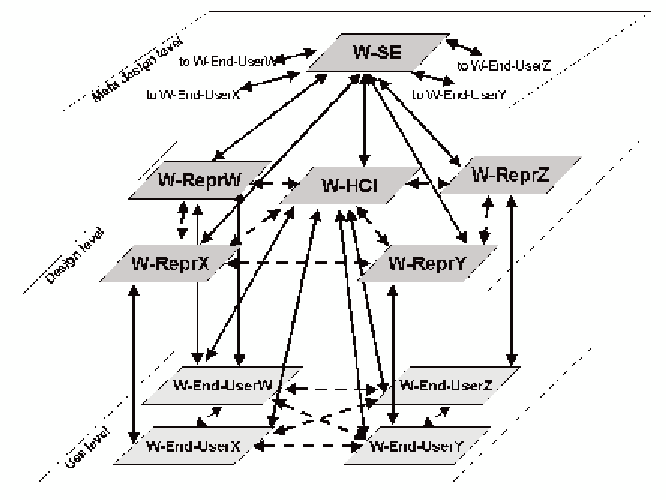Information Technology Reference
In-Depth Information
annotated document area into a new widget, to
which a computational meaning is associated.
This widget is added to the common knowledge
base and becomes accessible by other end users,
each one accessing the data through his or her
own workshop enriched by the new widget that
is adapted to the specific context.
In the second role, as members of the design
team, end users participate directly in the devel-
opment of the workshops for their daily work. In
fact, even if they are nonprofessional software
developers, they are required to create or modify
application workshops. To this end, different
workshops (
system workshops
) are made avail-
able to them, which permit the customization of
each application workshop to the end-user com-
munity needs and requirements. The concept of
system workshop is more general: actually, system
workshops exist that allow the members of any
community involved in design and validation of
the system to participate in this activity. For ex-
ample, system workshops for Human-Computer
Interaction (HCI) experts and software engineers
are used.
Each member of the design team can examine,
evaluate, and modify an application workshop
using tools shaped to his or her culture. In this
way, this approach leads to a workshop network
that tries to overcome the difference in language
among the experts of the different disciplines
(software engineering, HCI, application domain)
who cooperate in developing computer systems
customized to the needs of the user communities
without requiring end users to become skilled in
all the involved domains of knowledge.
The network is structured so that the different
users can participate in the application workshops
design, implementation, and use without being
disoriented. Every user can access more than one
workshop. For example, an end user as practitioner
uses an application workshop, while as a member
of the design team (representative of the user
Figure 1. The SSW network; dashed arrows indicate communication paths, and full arrows indicate
generation and evaluation paths

Search WWH ::

Custom Search